TAG Heuer Autavia Isograph: Carbon-Composite High-Tech Hairspring For All
What is the best way to introduce new innovations that might go on to change the way things are done across the board? In a luxury product, of course!
Innovation is almost always expensive in its early stages, usually because manufacturing support isn’t built up enough to allow for mass production, and the production processes are still specialized. For that reason, we, the consumer, are often introduced to new technology within a luxury package since the added premium usually doesn’t make sense in an economy package.
The best example I can think of to demonstrate this is the car brand Cadillac.
Often used as an adjective to indicate the ultimate achievement of a given field or product (as in “the Cadillac of home audio systems”), Cadillac is famous for being one of the testing beds for GM to experiment with its inventions and improvements. Over the years, many GM innovations were first seen in a Cadillac model, often leading to the entire automotive industry following suit soon after. Some inventions didn’t catch on until technology became better years later, but many times it ushered in a new standard for the entire industry.
Some examples are: the electric starter (1911), high-beam headlights (1915), the SynchroMesh gearbox (1928), adjustable ride selection (1933), first use of Phillips-head screws (1937), auto-dimming headlights (1953), automatic rain sensor (1958), radar-detection crash avoidance (1959), automatic climate control (1964), variable displacement engines (1981), OnStar (1996), and magnetic ride control (2002) just to name a few.
These examples clearly demonstrate that what may now be considered normal were once the newest and most advanced technologies, and they found a home first in an upmarket package to allow more well-heeled consumers to be the proverbial guinea pigs for the advances. But history also showed that these advances, quickly in many cases, found their way into our everyday vehicles and became the standard. This isn’t a phenomenon restricted to the automotive industry; it happens nearly everywhere, and the watch industry is not exempted.
The use of silicon, for example, was once a luxury but is now being found in more everyday timepieces. The latest example of this technology trend comes from TAG Heuer, where the timeline has proven to be extremely short from the first appearance of a brand-new technology to mass market availability.
I am talking about the carbon-composite hairspring that debuted in January 2019 in the Carrera Calibre Heuer 02T Tourbillon Nanograph for $25,500, a premium position for certain.
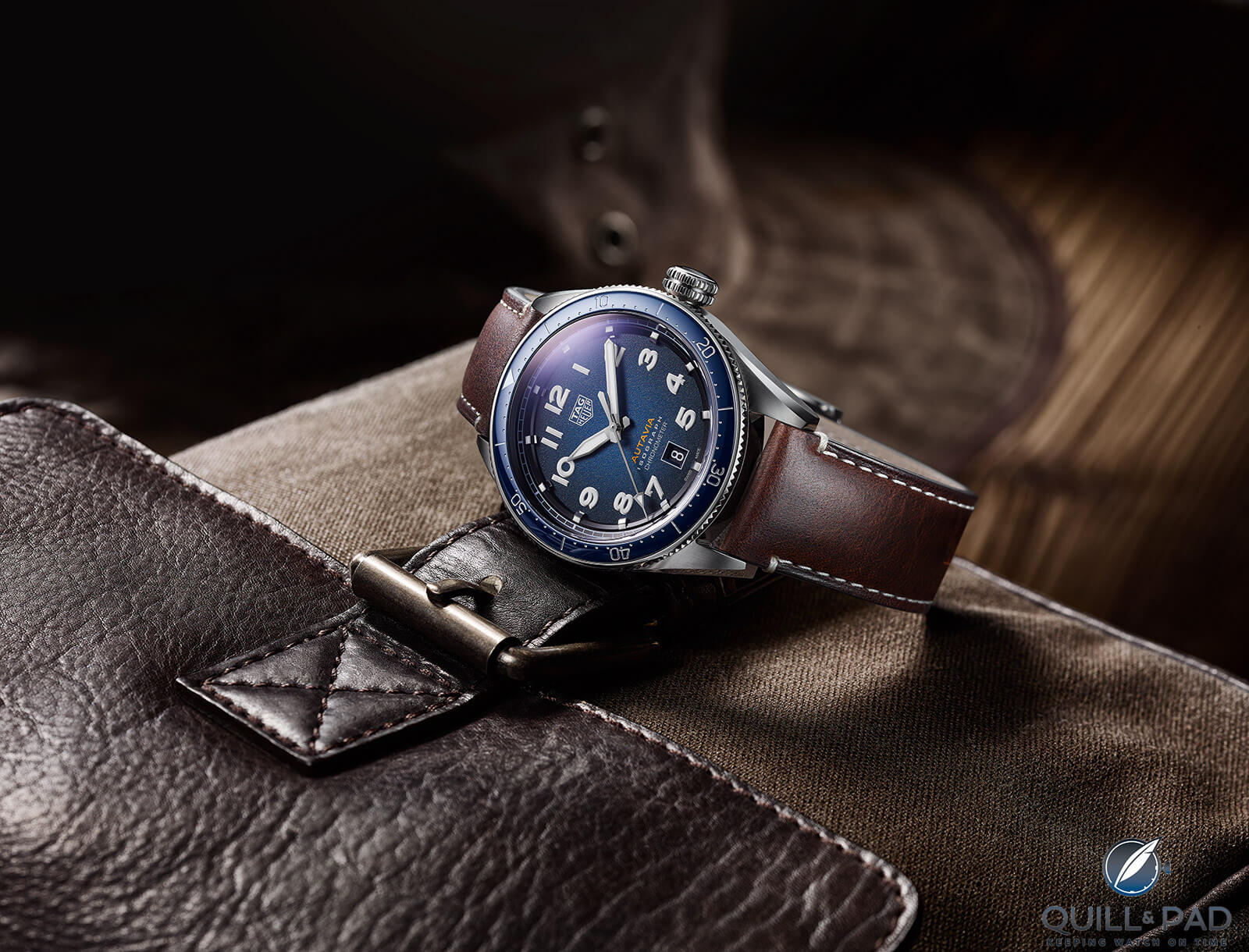
TAG Heuer Autavia Isograph
Just two short months later at Baselworld 2019, this technology already found its way into the brand-new Autavia collection that will prove to be much more accessible and just might cement the carbon-composite hairspring as the turning point for chronometry standards within the LVMH group.
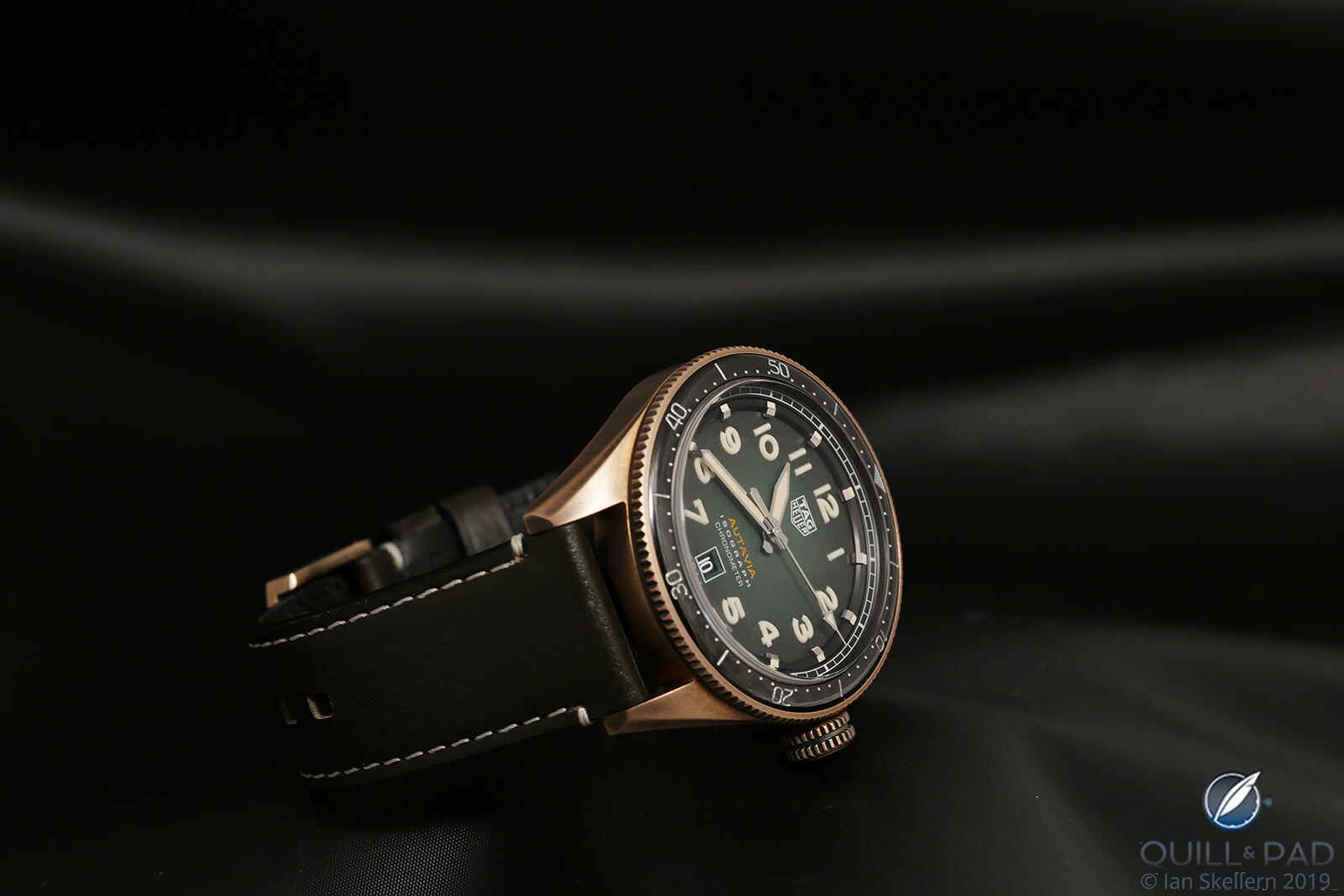
TAG Heuer Autavia Isograph
Innovation inside heritage: the new TAG Heuer Autavia
The Autavia is now a standalone collection inspired by the original Autavia, which was in production from 1962 through 1985 after being adapted from a previous dashboard instrument sold by Heuer for race cars and aircraft.
The original Autavia proved immensely popular and along with the Carrera was one of the main reasons Heuer survived through the quartz crisis. These were affordable and rugged watches with lasting style and that special “it factor” that helps turn a watch into a classic.
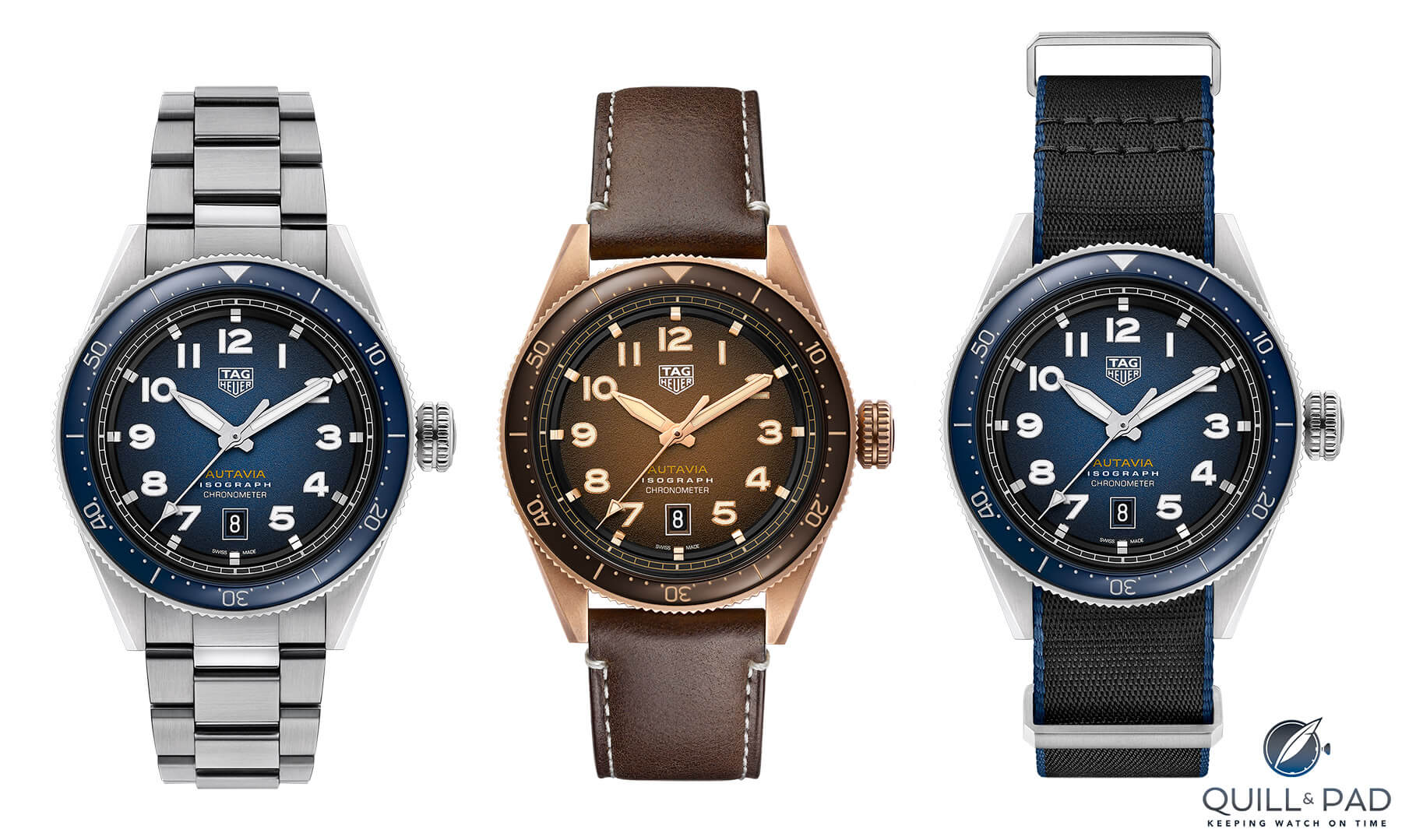
The new TAG Heuer Autavia comes on a bracelet and both leather and NATO straps
The new Autavia collection, building on that heritage, at launch comprises a set of three-handed watches plus date with a variety of options. There are seven references in two metals, stainless steel and bronze. Across the references we find five different dials, four different bezel options, and the choice of a stainless-steel link bracelet, leather straps, or additional NATO strap (that comes gratis with the bracelet option).

TAG Heuer Autavia Isograph on NATO strap
The models all feature the same solid engraved case back and dial layout and, most importantly, the same Caliber 5 movement sporting the recently released carbon-composite hairspring, now dubbed the Isograph hairspring.
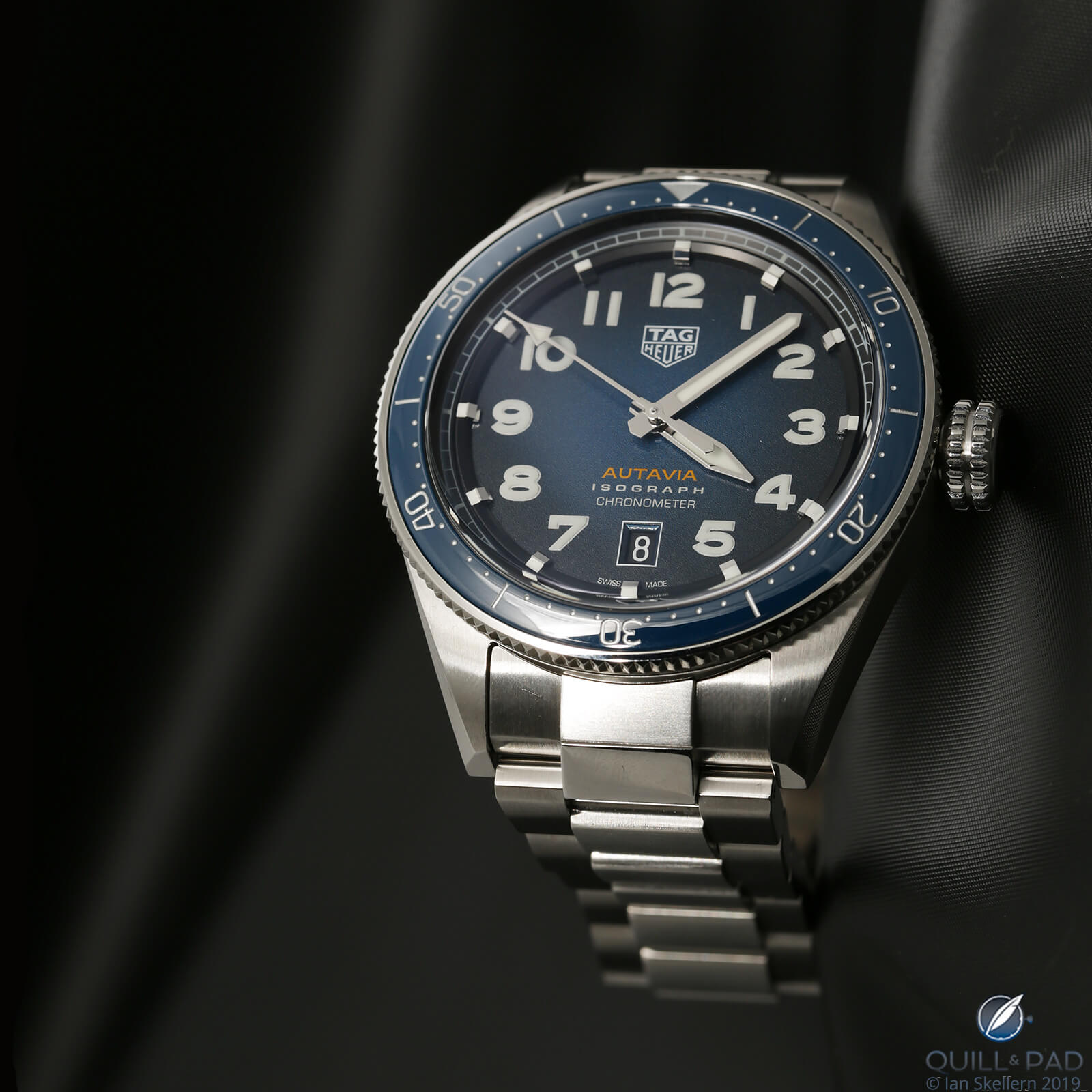
TAG Heuer Autavia Isograph
The styling is to be expected: very retro with the typical modern updated touches largely acceptable to the casual consumer. The technological predecessor, the Tourbillon Nanograph, was styled to catch people’s attention and get them talking; it clearly was not designed with mass market appeal in mind. But the Autavia collection is designed for that purpose, hitting all the right notes and not taking too many aesthetic chances with the details.
Like GM and Cadillac, the TAG Heuer Nanograph introduction helped flesh out implementation while gauging consumer response, but unlike the timelines for introduction in the 1950s automotive industry, the Isograph technology has found a home in an entry-level timepiece in record time.
Based on my understanding of the fundamentals of development, the two products were likely developed concurrently, with the staggered release only to allow the media to highlight the tech first before the new accessible range makes its debut.
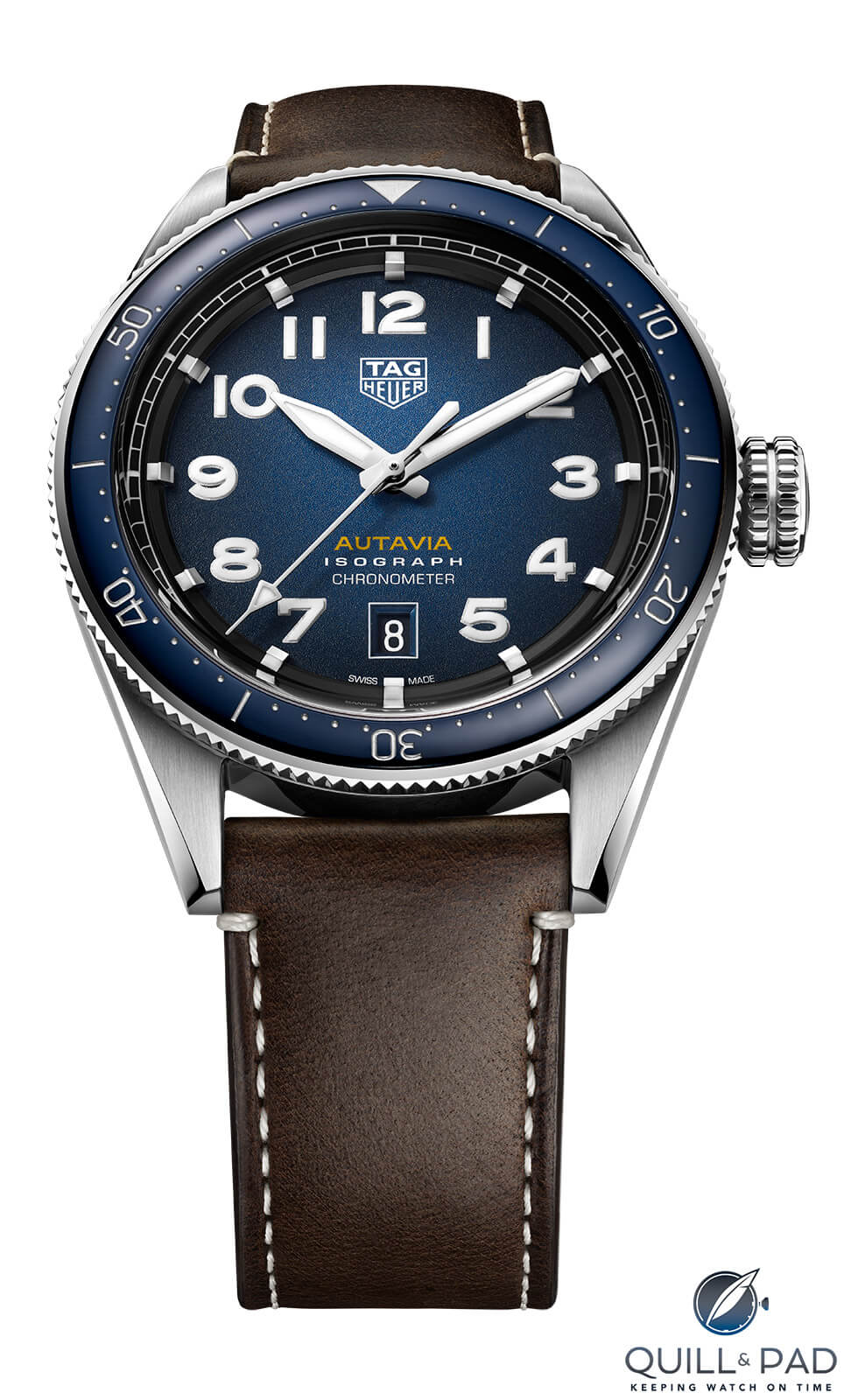
TAG Heuer Autavia Isograph
Implementation and ramifications of the TAG Heuer Autavia
The shift – only just beginning – from standard hairsprings or silicon hairsprings to the carbon-composite Isograph hairspring might very well mark the moment that a new standard technology entered the watchmaking industry, though of course only time will tell.
But the implementation in such a classic design is quite possibly the best move for TAG Heuer as it has an extremely strong heritage to draw from that keeps fans coming back to the brand. TAG Heuer’s ultra-modern offerings definitely excite me, but in most cases the watches are not for the average consumer.
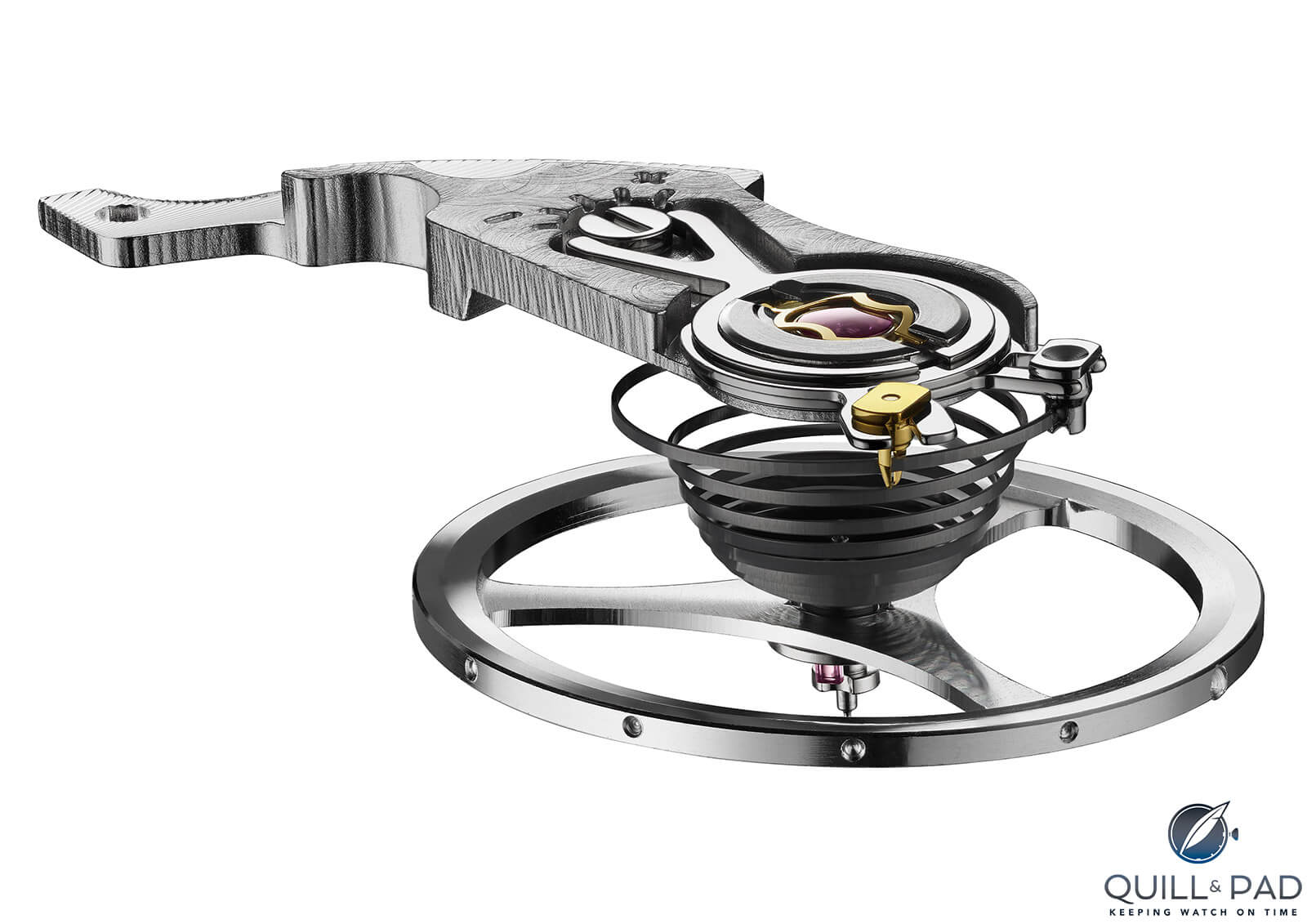
The Isograph carbon-composite hairspring beats inside the TAG Heuer Autavia
The classic design and history supporting the Autavia line will undoubtedly fit well into a segment of the TAG Heuer market, and, if popular, will firmly establish the Isograph hairspring as a solid standard for the brand. Offering such a high-tech hairspring that will always be chronometer certified bumps the base level up a notch that many brands simply can’t or won’t do with their current offerings.
Of course, the reception is the key to its success: there have been many technological advances that have lost out in other industries for completely random and unrelated reasons.
But I feel that the ability to create this hairspring and implement it at a cost similar to the traditional methods, while saving some assembly time and increasing isochronism across the line, should help it survive even if this initial collection shouldn’t become a grand slam for the brand.
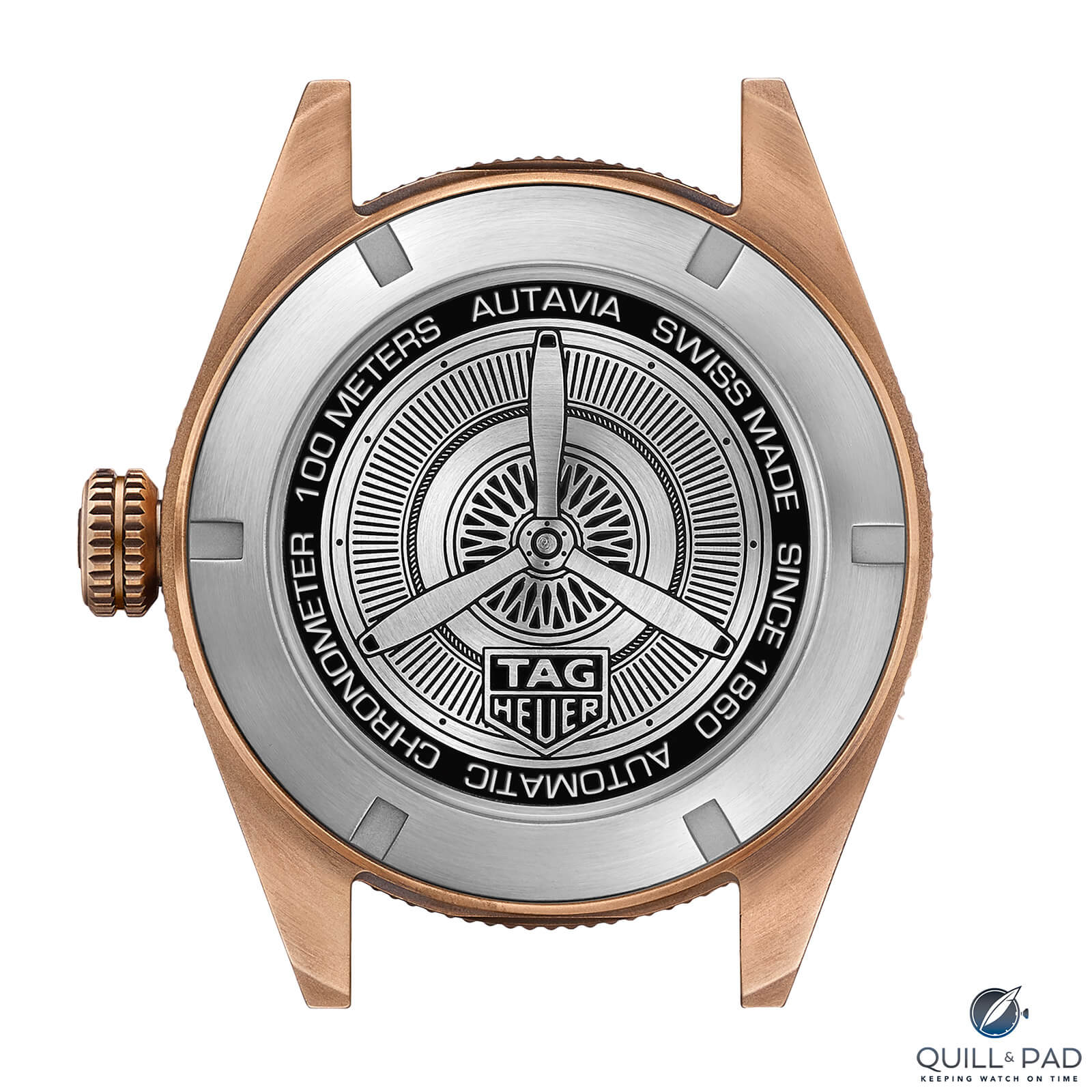
Back of the TAG Heuer Autavia Isograph
TAG Heuer’s recent past has been filled with a variety of high-tech innovations, showing a dedication to research and development and lending a certain gravitas to any technology it has such confidence in that it will base an entire line on its application.
The Autavia line is certainly a smart vintage-inspired watch, the dial has a faux patina (click for more on “fauxtina”) that may be a hit or miss for fans, but the clean lines of the case, the understated bezel, and three-dimensional applied numerals create a rather interesting watch. The date, often a negative for many purists, is executed fairly well, though it does lack the beloved color matching of the dial, the brand instead opting for a safer black with white numerals.
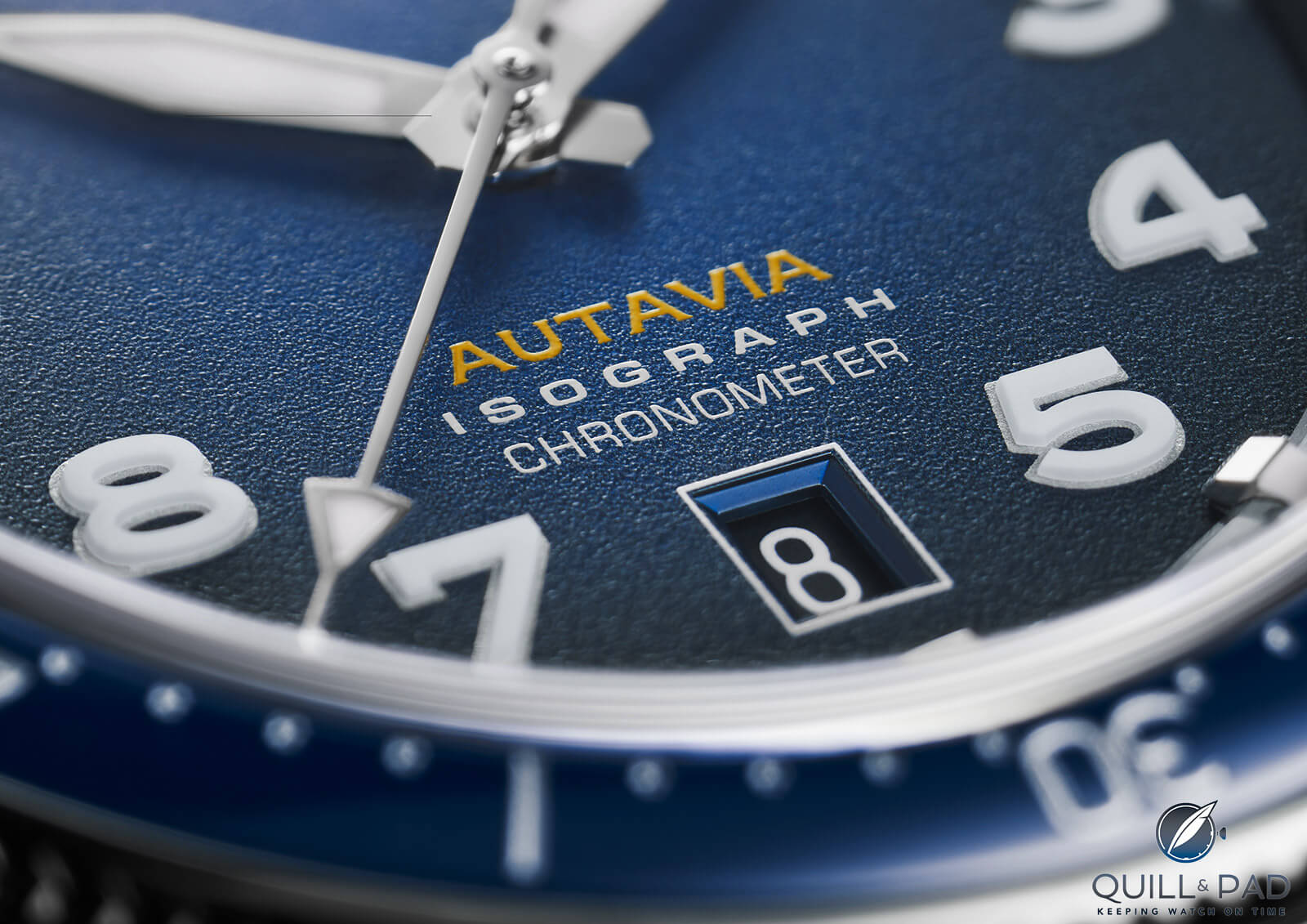
No color matching of the date on the TAG Heuer Autavia
Given the dial gradient I can understand why it may not have been an easy match, but when it comes to collectors that is a detail that can truly make or break a dial. Whatever the cost increase might have added, that might be an issue that is brought up alongside the faded dial gradient. However, when considering what you get with this watch, they truly are minimal issues.
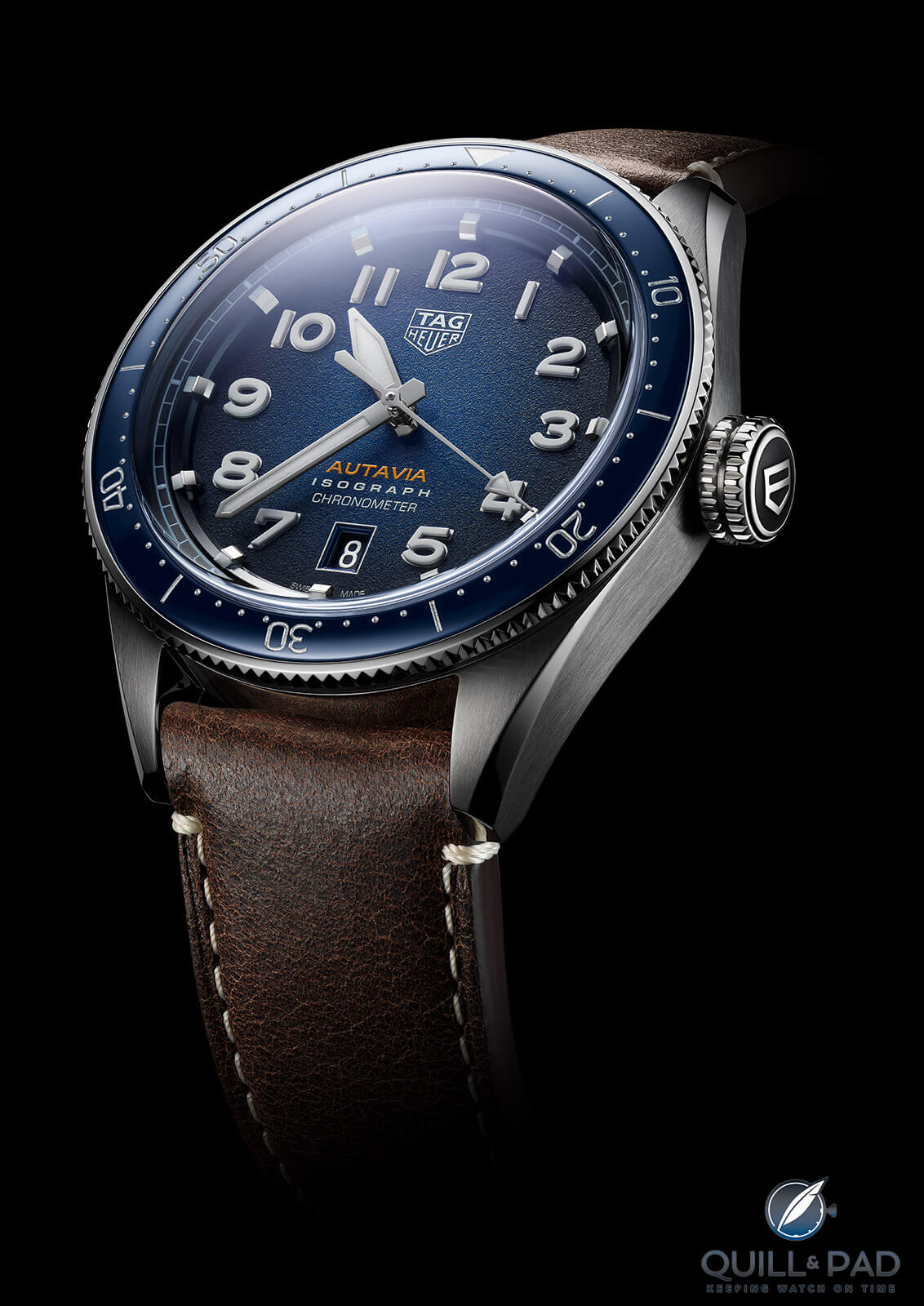
TAG Heuer Autavia Isograph
I wouldn’t be surprised if a less stylistically vintage set was released later this year or next year, perhaps when the line extends to include chronographs (or, going against the roots of the Autavia, other complications such as a complete calendar, moon phase, or GMT).
One thing is certain: the move to separate the Autavia into its own line and have it be fully supported by Caliber 5 with its Isograph hairspring is a definitive step to creating a new, solid base for the brand to build on.
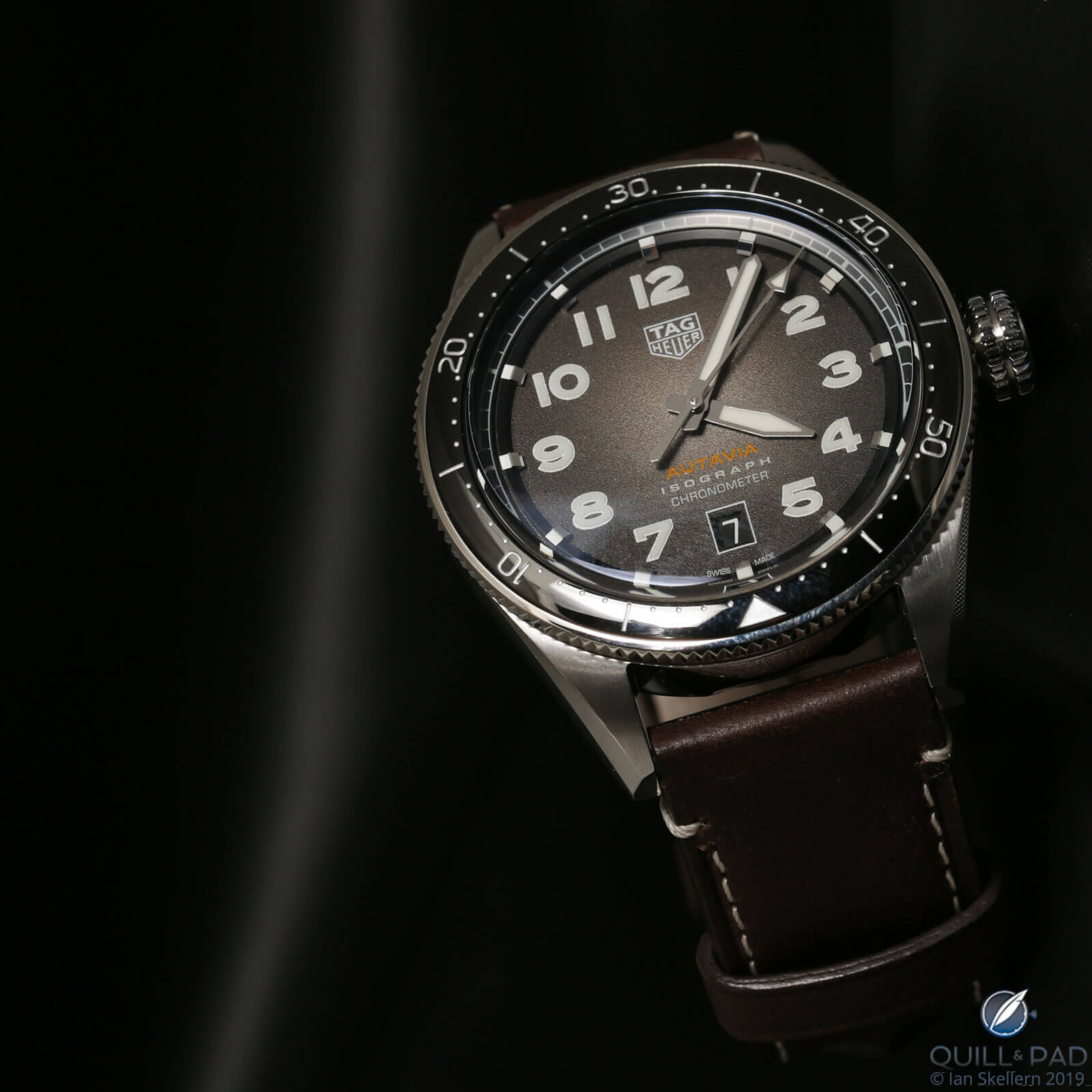
TAG Heuer Autavia Isograph
Unlike certain releases at Zenith or the often-maligned Hublot, this line could help take TAG Heuer back from an edge of transformation into something unfamiliar to the bulk of collectors and direct it into the core of its market.
In doing so, it would also promote high-tech watchmaking at affordable prices, something that is likely to be very valuable to the brand and the entire LVMH group. Too often, high-tech implementation happens beyond the reach of those supporting the brand by buying affordable watch purchases at large quantities.
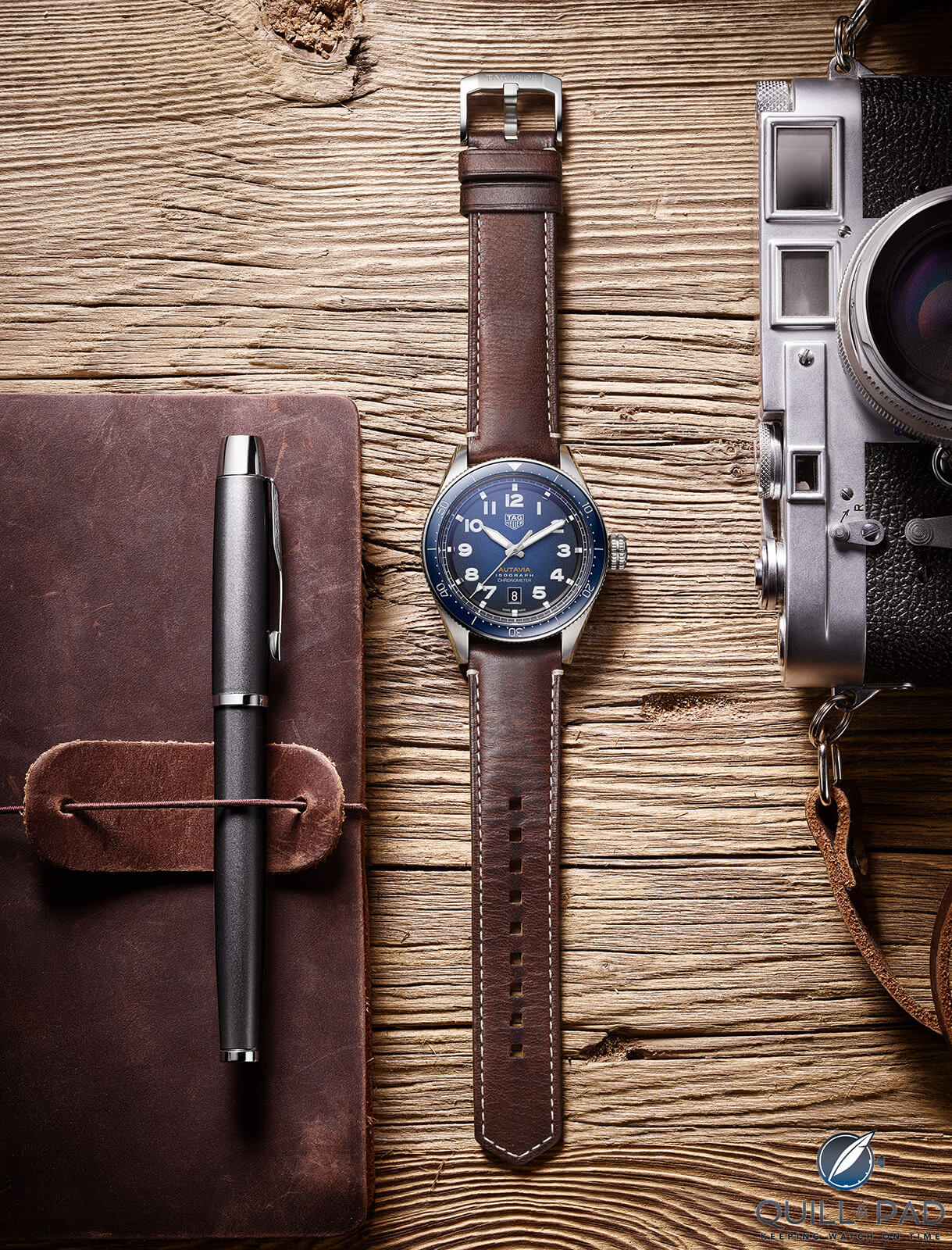
TAG Heuer Autavia Isograph
Brands like TAG Heuer are not really supported by $100,000 watch purchases; those pieces tend to simply offset production and research costs for the specific pieces. A brand thrives when its entry-level watches sell – and sell well.
I’m fairly optimistic and see the new Autavia collection as a solid move to strengthen the brand’s base with classic examples. If it can ensure that the offerings don’t become too numerous, this might be the beginning of a beautiful friendship, um, I mean collection.
So let’s break the collection down!
- Wowza Factor * 7.8 The watches are pretty cool, but the Isograph hairspring is still the belle of the ball!
- Late Night Lust Appeal * 78.4» 768.841m/s2 A fairly stable force to hold you down while appreciating the vintage goodness regulated by scientific magic!
- M.G.R. * 41.6 The movement is fairly straightforward and wouldn’t normally stand out much if it wasn’t for the Isograph hairspring inside!
- Added-Functionitis * Mild The Autavia line, so far, has an added date, so just a bit more than a basic three-hander. Still, that is rather tame, and you would only need the children’s strength Gotta-HAVE-That cream.
- Ouch Outline * 6.895 That kink in your neck from staring at a computer screen! The modern age has its own hardships, including the physical toll you take sitting at a computer for long stretches of time. Yet I would gladly deal with such a strain if it means getting my hands on one of these Autavia models, especially the blue dial and bezel with the bracelet!
- Mermaid Moment * Now that is a great everyday watch! Sometimes you aren’t looking for the most spectacular thing you’ve ever seen, instead hoping to find something that just works with no fuss or muss. Perhaps the searching is over?
- Awesome Total * 507 Multiply the depth rating in meters (100) to the movement number (5) and add the number of references (7) for a great everyday awesome total!
For more information, please visit www.tagheuer.com.
Quick Facts TAG Heuer Autavia
Case: 42 mm, stainless steel or bronze
Movement: automatic Caliber 5 with Isograph carbon-composite hairspring, officially chronometer certified, 4 Hz/28,800 vph frequency, 38-hour power reserve
Functions: hours, minutes, seconds; date
Price: $3,500 (steel bezel/leather strap); $3,600 (ceramic bezel/leather strap); $3,950 (ceramic bezel/bracelet + NATO)
You may also enjoy:
Leave a Reply
Want to join the discussion?Feel free to contribute!



Put it in the aquaracer line and cosc certify it and I won’t bother buying the omega seamaster master cosc!!!